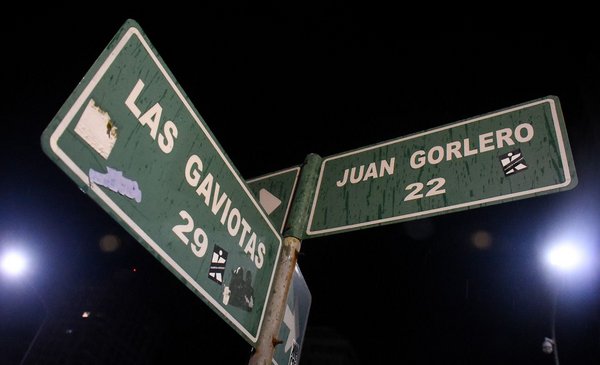During the week, around 11 pm —when rush hour is supposed to have passed— in the bars of Manantiales the minimum wait is half an hour for dinner. In that half hour, a curious Uruguayan —or involved— can listen to dozens of conversations from the side. But in all something in common: an accent. The most marked letter ‘s’, and idioms, such as the filler man. Among the young people from Buenos Aires waiting in the Manantiales bar, conversations naturally include references to planes and boats owned by their relatives.
Those talks are repeated hours before between middle-aged women in a fashionable cafe in La Barra or at a family lunch at an expensive restaurant in José Ignacio. But the subject does not only remain in the air, in a light talk on vacation. For Maldonado tour operators, it is marked by fire in the figures. There was a record of entry of planes and private planes to Laguna del Sauce and in the Port of Punta del Este there is a long waiting list as not seen for a long time, he told The Observer the director of Tourism of Maldonado, Martín Laventure.
Although they opened the season with the illusion of the return of a large portion of Argentines who had stopped coming with the pandemic, reality exceeded expectations. At least in this beginning. This was stated by the undersecretary of Tourism, Remo Monzeglio, who said that it is the best start to the season that he has seen in the last 40 years. Argentines —65% of the tourists who entered— have a lot to do with it.
The Argentine captured Punta del Este in the early days of summer despite the economic crisis and a change that does not favor them. As he has done for years in Miami and as he did in Qatar. “We are many, 47 million. The currency situation is not good and that does not coincide with the fact that we were one of the countries that took people to Qatar the most or that we are the third citizen who goes on vacation to Miami the most. Of 47 million, there are 100,000 or 200,000 that can make a place take over. That’s what happened in Qatar, Punta del Este and Miami,” said Alfredo Giarelli, from the Association of Argentine Homeowners in Uruguay (APAU) to The Observer.
However, beyond the quantity, there are other differences with respect to the pre-pandemic Argentine tourist. In 2020 and 2021 (record year) the number of residencies granted to Argentines tripled and —as reported The Observer— that made Punta del Este a year-round city. “That makes you start from a higher floor,” said the director of Tourism of Maldonado. Thus, the Argentine residents took advantage of these dates to show their friends, acquaintances, and visitors, the benefits of the place they chose to live. Or the one they choose to go and return to, because as Laventure says, there is a percentage of Argentines who divide their lives between the two places.
But these days, some of the benefits that Punta del Este has can be dissipated by the large number of people who visited it. While in August it is a calm city where it is easy to access services and everything is relatively close, this January there is a line for practically any activity and the traffic is saturated. 15 minute tours can become 45 after noon.
The second peculiarity is that although a very significant portion of Argentines with very high purchasing power came, a percentage of the upper middle class also came that had not come with the pandemic. “An upper middle class has returned that in recent years, had not come so much. Perhaps the mentality also changed a bit and with respect to the pandemic, more desire to enjoy and Punta del Este, well, it is a beautiful place that invites you to be able to enjoy,” Giarelli said. In turn, in 2020 and 2021 the swabs made family budgets more expensive and the uncertainty of the possible contagion that forced them to extend the stay.
In the eastern resort, the Argentines have left their mark. The blackboards of the bars, in addition to the menu, have the price of the dollar written in chalk. At all the parties —the nocturnal offer increased a lot— the version of Guys, now we got excited again of La Mosca Tse – Tse and there were hundreds of young Argentines who raised their arms and chanted the song that was the anthem of the Argentines during the World Cup in Qatar 2022 in which they were crowned champions. It was the vast majority, so much so that if the scene were narrated in another context, it could perfectly well be a moment lived at a party in a field on the outskirts of Buenos Aires.
The Argentines not only filled the dance parties that took place every night, but also organized their own. The Jet bowling alley in Buenos Aires held a New Year’s party and several other events throughout this first week, where the presence of young people from Buenos Aires was almost total.
According to data from the National Directorate of Migrations, between December 22 and January 8, some 173,490 Argentines entered Uruguay. In the last pre-pandemic season, in 2020, there were 309,112 Argentines throughout January and 290,405 in February. Last year, with borders open again after the pandemic but with restrictions, Uruguay received 235,964 Argentines in the entire first quarter, according to information from the Ministry of Tourism.
The Minister of Tourism, Tabaré Viera, reported this Monday that between December 22 and January 8, 460,000 visitors (including Uruguayans) entered, which represents almost 40,000 more than in the same period of summer 2020. He also highlighted the record number of cruise ships (212) that arrived at Uruguayan ports. Another point to take into account to evaluate a season is the spending made by tourists who arrive in the country. There is no data on this point yet.
A fortnight that is shortening, hope in teleworking and focus on traffic
The seasons in Punta del Este lasted a whole month. And then they lasted 15 days. Today it seems optimistic to think that it will last that long and it will be necessary to analyze how much the occupation drops as of January 10. “Statistically, the way of vacationing has begun to change for a long time. It is something that happens in the world. They are shorter periods throughout the year. That is why you have to have a tourist offer that is more than sun and beach, so we can attract more public at different times of the year. The question that exists now is to see if the post-pandemic world, which brought teleworking, affects the way of vacationing, “said Laventure.
Hotel occupancy —the only measurable one, but also with the most limited offer— is almost 100%. The rents —expressed the director— “hopefully they will never be 100% in the same period of time because it would really be tremendously complicated.” Although he said that there is “very good occupation”. The main concern is the traffic saturation, which has brought several headaches to the leaders and tourists. “You have to grow, but in an orderly way,” he summed up.
Giarelli stressed that it is important to start motivating the extension of the season. “A longer season is better for everyone, traders and investors,” he said.
The two points of the East
In winter, José Ignacio is deserted land. Its isolated location and the damp, windy cold that defeats any shelter make it an inhospitable place to spend the season. In summer, the second no longer exists and the first makes it the most sought after place. Thus, José Ignacio is not the place that Argentines chose to live, but rather to do tourism. The beaches are crowded —despite their wide sand, the umbrellas were still close to each other—, the restaurants are all at full capacity and the exclusive brands that have set up shop there are having good sales. The prices are more expensive and that is why it is the most exclusive tourist site.
However, the offer in the Punta Esteña Peninsula was maintained and also saw Gorlero Street full and the stores on it with good sales. “There are offers for all budgets, based on those who can vacation. There is a middle and upper-middle class that can vacation and has the possibility of doing so in Punta del Este,” Laventure explained. In any case, the budget for a week’s vacation in Punta del Este for a typical family —a couple and two children— does not fall below 2,000 dollars.
Resident Argentines, the municipal official highlighted, tend to settle mainly in luxury buildings on Playa Mansa, but also on Playa Brava. Its proximity to the department’s main services make it a tempting place to live all year round.
projections
The Center for Economic Research (Cinve) had projected prior to the start of the season that between December 2022 and March 2023 the number of Argentine visitors arriving in the country would be around 890,000 people, and the number of Brazilians would be slightly below 200 thousand in that period. These projections suggest that the figures prior to the pandemic would not yet be fully recovered. In the case of Argentina, the data would show 1% less than the 2019-2020 summer season, the last one without a pandemic, and the flow of Brazilian tourists could be at levels similar to that season, he explained.
None of the projections establish numbers similar to those of 2017, especially regarding the entry of Argentines, which was a record season in terms of visitor arrivals.


















